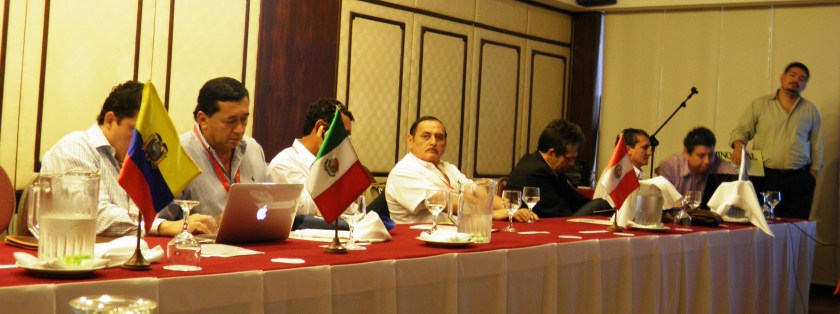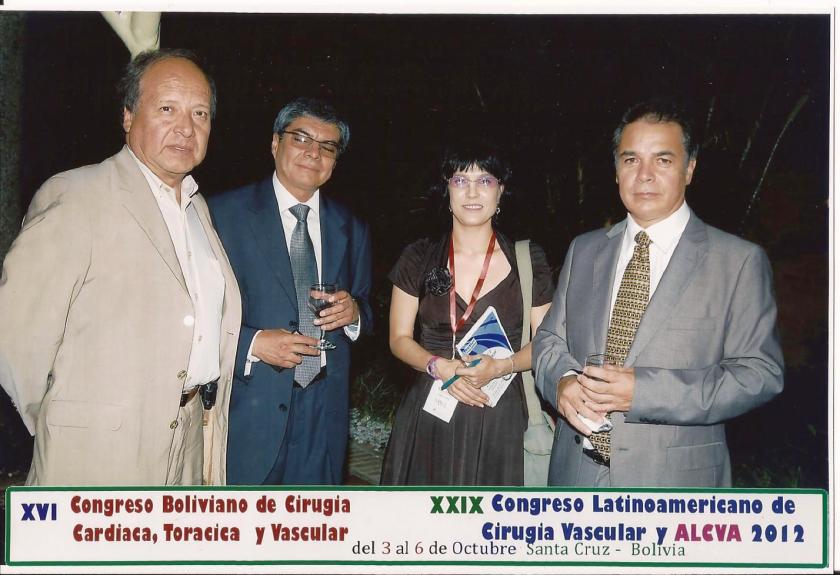This afternoon’s thoracic surgery offerings were provided in a more relaxed, round-table style discussion.

Dr. Edwin Crespo Mendoza, thoracic surgeon, of Santa Cruz, Bolivia led the discussion on diaphragmatic hernia repair and reminded the audience that over 50% of traumatic diaphragmatic hernias go undiagnosed at the time of initial presentation after trauma. To illustrate this, Dr. Crespo presented several cases including a case of post-traumatic hernia diagnosed 13 years after initial auto accident.

Dr. Fernando E. Jemio Ojara, MD (cardiothoracic surgeon) here in Santa Cruz at the Clinica Folanini presented a fascinating case of bilateral lung injury after blunt trauma. In this case, the patient was preparing to undergo urgent repair of a right-sided bronchial tear but during attempted intubation saturations dropped dramatically to 60%. At that time, the patient was placed on ECMO by venous cannulation to maintain oxygenation during the case. The surgeons proceeded with a right posteriolateral thoracotomy. Patient had a short successful ECMO run of 85 minutes, with extubated within 36 hours of surgery, and had no further problems post-operatively,
Dr. Ojara also discussed the mechanism of these type of acceleration – deceleration injuries that most commonly affect the right middle lobe, and how stabilization with ECMO is an effective strategy to repair what is essentially a functional pneumonectomy (in this particularly patient).
Dr. Fidel Silva Julio, Thoracic Surgeon also talked on a similar theme in his overview of closed chest trauma. He reminded the audience that 75-85% of all closed chest trauma patients need some sort of surgical management from chest tube placement to urgent surgery. He reviewed the classic presentations and radiographic findings in some of the most common conditions after chest trauma such as tension pnuemothorax/ sucking chest wounds, flail chest, pneumomediastinum, cardiac tamponade and pulmonary contusions. There were several medical students in the audience, taking notes – so I have included links to the radiology signs mentioned in his lecture, as well as a basic radiology primer.
He also highlighted the need to prevent the typical trauma pitfall of massive volume resuscitation which can prove extremely detrimental in these patients.
More Radiology References
Hamman sign – pneumomediastinum
